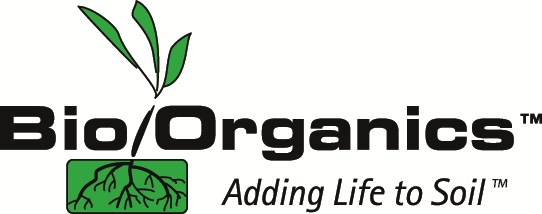Potential users of BioOrganics products often ask how to apply and maintain the mycorrhizae in various
specific situations. Here’s an answer we provided to a rose grower.
Situation:
Estate gardens, Washington state
Large beds of mature roses that have been performing poorly under a chemical routine.
Our suggestions:
1. Probe some of our BEI powdered inoculant down to the root zone of each rose bush. Using a
stick or rod, open a small hole about 6-8 inches deep a few inches away from the base of the plant,
pour a full teaspoon of the inoculant into the hole, push it down to the roots with the stick or rod, then
close the hole.
2. Scatter dry pelleted BioGro 9-3-5 fish fertilizer around the plants, in about a 3-foot circle and
scratch it lightly into the soil - don’t dig more than an inch or two deep. Use about 1 lb. per plant. You
can obtain this fertilizer in 50-lb. bags from Bio-Oregon in Warrenton, Oregon. (If there is not a dealer
near you, call 1-800-962-2001.) Do not use any other fertilizer - this is a very long lasting gradual
release product that contains ideal nutrients for roses.
3. Cover the fertilizer with mulch - sawdust, bark dust, ground yard waste, or bagged soil amending
products would all do fine. This is to protect the fish pellets from animals, maintain even moisture for
the roots, and will provide fodder for earthworms as it decomposes.
4. As the worms feed on the bottom of the mulch and the fish pellets, they will multiply into huge
populations and continuously deposit their rich castings throughout the root zone. The mycorrhizal
fungi will then transport these perfect nutrients into the rose roots at a rate more than ten times what
the plant could do on its own. In about 4-6 weeks the roses will begin to show the effects of this biology
based approach to horticulture and then proceed to display strong growth, imporved disease
resistance, and increased bloom productivity.
5. As the mulch disappears, replenish it. Every spring, repeat steps 2 and 3. (The mycorrhizal inoculation
only needs to be done one time.)
As for other plants, the general strategy is simply to dust some of the BEI powder on transplant roots
as they are set out, or work it into the soil underneath row crops before they are seeded. Again, the
pelleted fish works better than any other fertilizer we have tested. The 9-3-5 formulation is best for
mycorrhizal fungi which are sensitive to P.
Don Chapman
BioOrganics, Inc.
www.bio-organics.com
Feb., 2001
